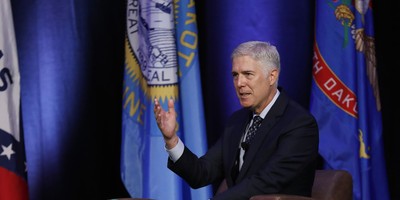P.J. O’Rourke once described the early Clinton administration as “running the country by dorm-room bull session.” Some recent discussion among education progressives makes me wonder if they too have fallen back into some old college habits.
Catherine Johnson at the blog Kitchen Table Math, for instance, wrote on Randi Weingarten’s first speech as President of the American Federation of Teachers, the nation's second largest teacher union. Weingarten bashes NCLB, then lays out a vision for the future of public education:
“Imagine schools that are open all day and offer after-school and evening recreational activities and homework assistance … and suppose the schools included child care and dental, medical and counseling clinics, or other services the community needs. For example, they might offer neighborhood residents English language instruction, GED programs, or legal assistance.”
Far out, man!
Personally, however, I’m trying to imagine a system of public schools that could teach 4th grade kids how to read after spending $40,000 or more on their education. In 2007, 34 percent of American public school 4th graders scored “below basic” in reading on the NAEP. If we can’t trust schools to teach kids how to read, why would we want them trying to fix our teeth or resolving our legal issues?
Weingarten has succeeded in getting a number of grandees, some of whom threw away their right-of-center credentials in the process, to sign a petition calling for such a program. These signatories seem to believe that schools can become more effective by becoming less focused on academics.
This is precisely the wrong direction to take. Professor Paul Hill recently conducted a series of studies for the Gates Foundation concerning the stubborn lack of academic progress despite increased spending. After a series of studies, Hill concluded:
Recommended
“…money is used so loosely in public education--in ways that few understand and that lack plausible connections to student learning--that no one can say how much money, if used optimally, would be enough. Accounting systems make it impossible to track how much is spent on a particular child or school, and hide the costs of programs and teacher contracts. Districts can’t choose the most cost-effective programs because they lack evidence on costs and results.”
Public schools have yet to do a cost-benefit analysis on the nearly $10,000 per year per child they already spend. They, therefore, have a very poor idea about which of their activities help achieve the goal of producing a well educated child, and which do not. Basically, they just do what they do; which certainly helps explain how a school system could burn through tens of thousands of dollars without teaching a child to read.
In Arizona, a stunning 44 percent of 4th graders score below basic in reading. Despite that fact, we have elementary school days that include a regular coursework in art, music, and physical education. These offerings are enriching and wonderful for many children. Why, however, would a 3rd grader who can’t read take courses in art or music?
Given that people are neurologically wired to learn to read in the early years, might it make more sense for schools to reallocate their resources (both money and time) on reading in the early grades?
One’s lifelong ability to appreciate music and art, after all, would be greatly enhanced by learning how to read.
We know that children who do not gain basic literacy skills in the early grades are all but doomed to academic failure. Children who don't learn how to read in early grades fall farther and farther behind grade level with each passing year. By early middle school they can't make heads or tails of the textbooks in front of them, and often become disruptive. Never envisioning themselves going on to college, they begin dropping out after 8th grade.
Public schools often make poor use of the money the already have, which is a massive amount by historical standards. Inflation-adjusted spending per pupil in Arizona has more than tripled since 1960. It isn’t hard to imagine spending even more while still failing to teach basic academic skills to large numbers of kids; schools have been doing it for more than 40 years.
If lawmakers are serious about helping children, they should focus on policies such as increasing parental choice and implementing merit pay. The focus should be on getting more bang for the bucks already committed to education, rather than throwing more money at the problem.
























Join the conversation as a VIP Member